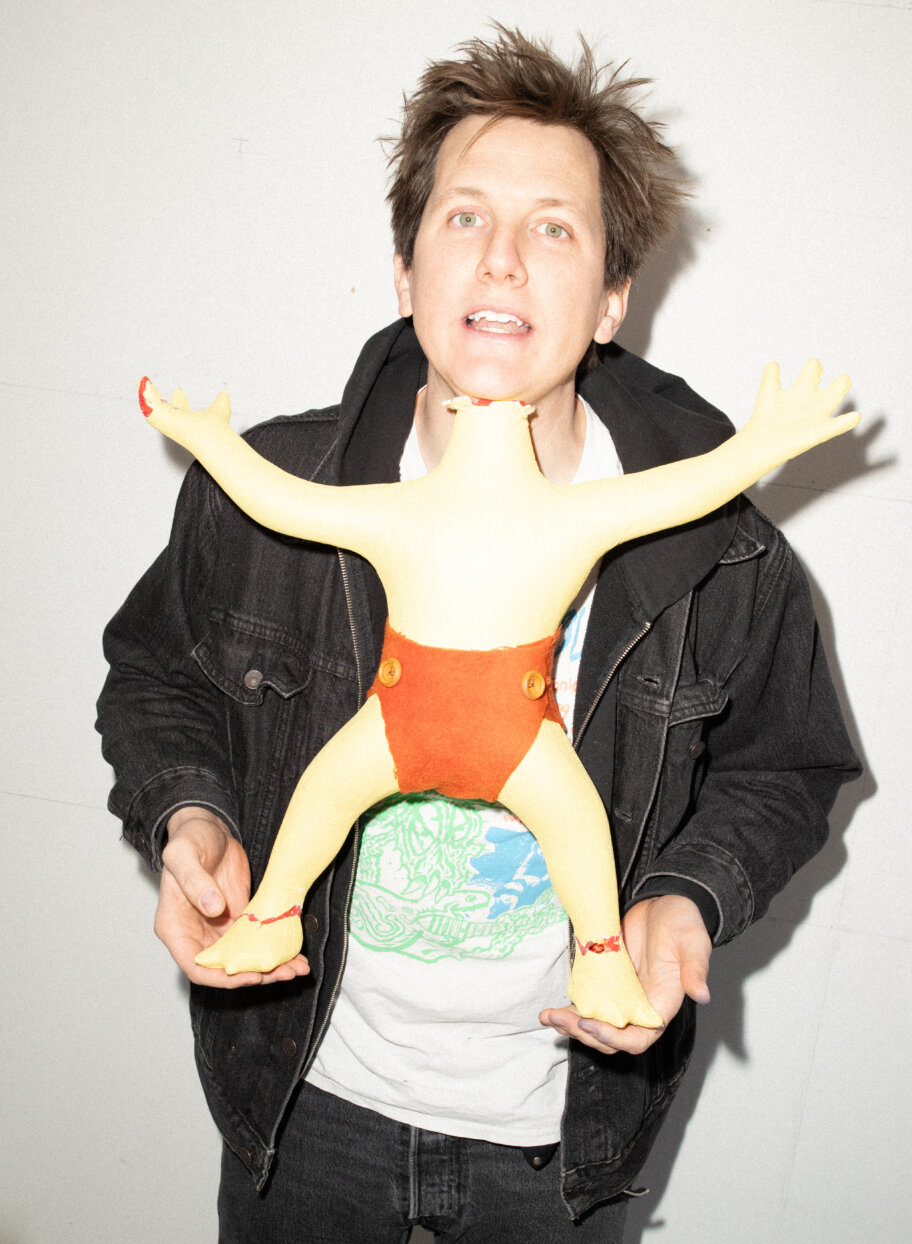
INTERVIEW JESPER GUDBERGSEN @yessirjesper
PHOTOGRAPHER ANGEL CASTRO @___angelcastro
Hi B.Thom! Give us an introduction. How do you introduce yourself to people?
That depends on who I’m introducing myself to, I guess. I’m a painter, designer and dad. I do a lot. I’m a curious person and I like to explore.
You’re a gallery owner as well?
Yeah, it’s a small gallery Called Paradise, in an old chapel in a little church here in Sutton, MA where I live now. I show one work from one artist a month, although right now it’s really cold because there is no heat, so no shows are open at the moment.
And this is back in your hometown?
Yeah, I grew up here. And then I went to school in Savannah Georgia at SCAD while working at the Marc Jacobs store in town. Eventually that led me to New York where I lived for around 12 years with my wife,who’s actually from my hometown as well. We lived illegally in a loft studio and when we had a baby, it became clear that it didn’t work anymore. We put a downpayment on an apartment in New York, but after coming up here during my parental leave, I realized it would be way better for our family to be in a little town, you know, have a yard and all that.
How do you describe what you do? Take me through your day
I wake up early with the kids every day and usually do phone calls with people in Europe that I’m working with in the morning – my calls throughout the day follow the sun to the west coast. I do a lot of design stuff during the day and try to take paint breaks. I’ve been making a lot of clothes recently, and sometimes I am creating pieces as I am on the phone as well. I like using my brain in different ways all day long.
Do you split your time between commercial work and personal art projects evenly?
I do a lot of things. I have mouths to feed, two kids and a wife who also works very hard. It is not the split I would dream of but it’s not bad. It allows me a lot of time for my family, and I get to do a lot of fun and challenging projects with my friends.
When did you first start doing art and how did you find out this was the direction you wanted to continue in?
When I was in high school, I remember feeling a lot of pressure to choose what I was going to do for the rest of my life. I think the real drive was that I was really interested in music but I’m tone deaf and don’t have any rhythm whatsoever. So I wanted to be involved in the scene and did end up in a few bands, but my way to be involved was mostly to make T-shirts, album art, flyers for bands. I think that’s what pushed me into it, art is what I was naturally interested in. Drawing has been my favorite thing to do since I was a kid, I wasn’t a sports guy or anything like that.
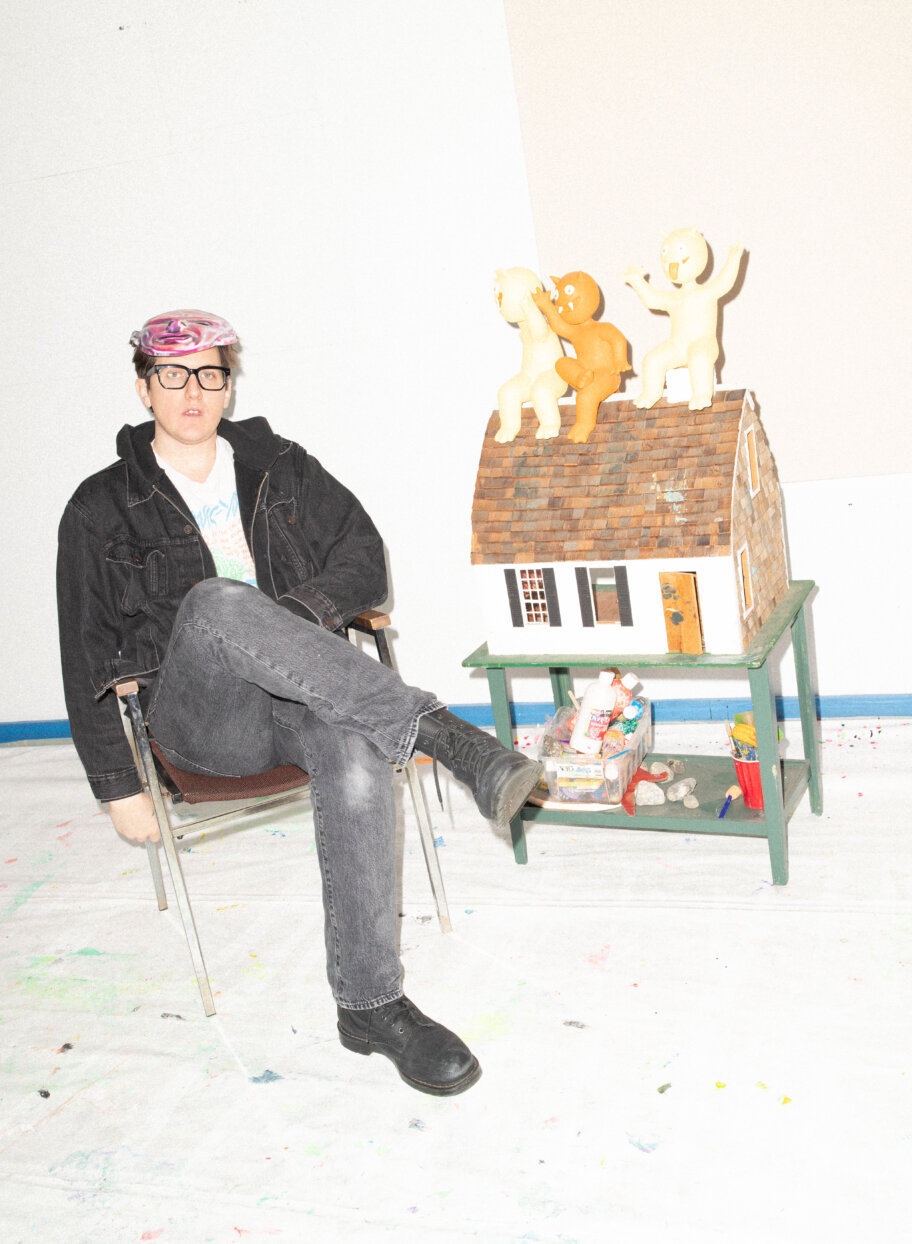
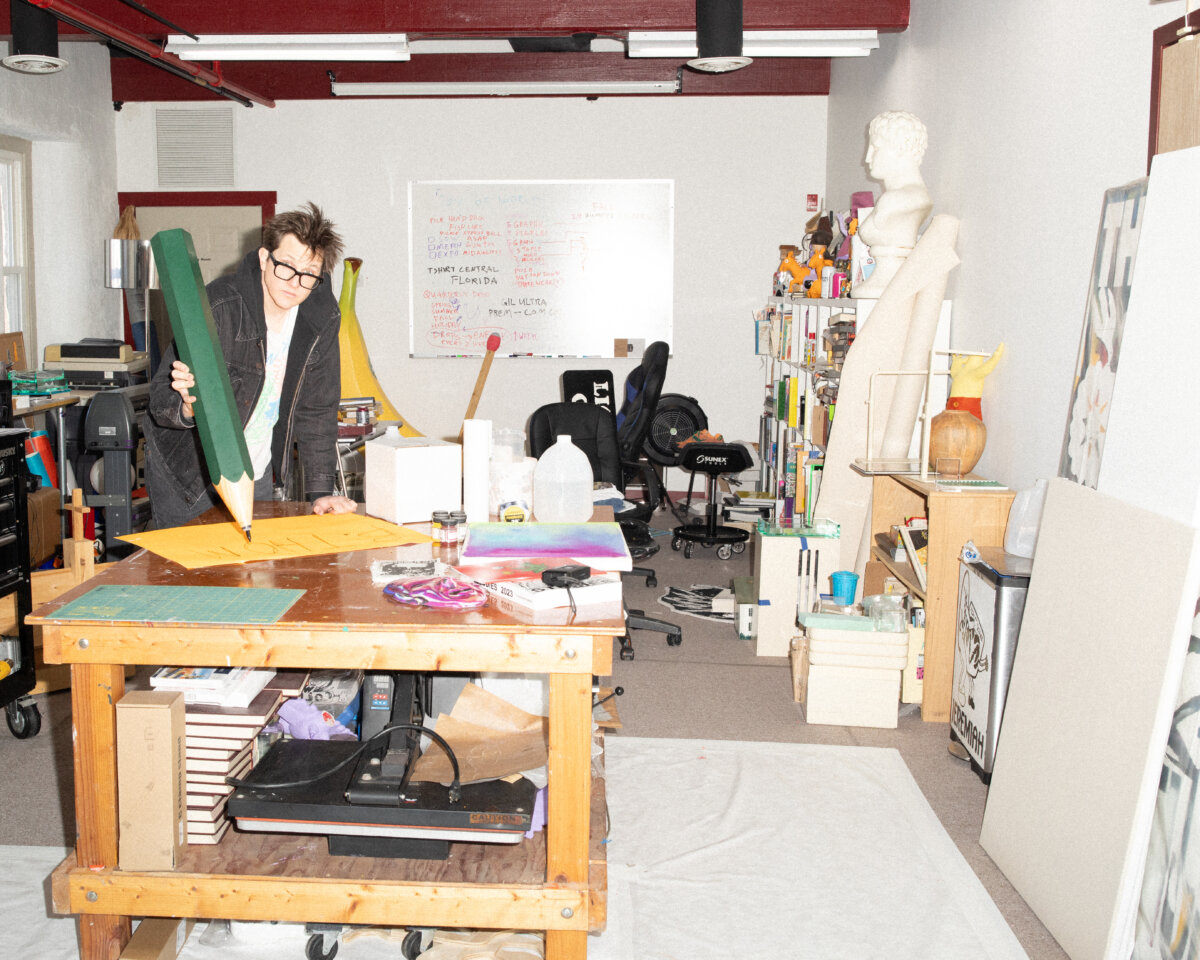
Eventually you ended up in art school in Savannah, and at the Marc Jacobs store; an early merging of two worlds you still operate in today; art and fashion. What exactly did you do at Marc Jacobs?
The store manager grabbed me while I was skating around outside the store and offered me a job as a stock boy, doing shipping and receiving. At the time I was working at an ice cream store, but working at Marc was the best job in town. I would hustle and eventually I started doing window displays, or I would paint a mural in the store and design some t-shirts, all after hours. Robert Duffy, the co-founder of Marc’s company, would come down there often and one day offered me a job in New York. He would say that all the time, but this time I had witnesses and I thought I would hold him to it. I had done two t-shirts and they sold really well, so I thought I had a chance here. He liked this little karaoke bar around the corner and the night before he left town I went there uninvited, guessing he would go there. We had a wild night at the bar, which is kind of the Savannah vibe, and he mentioned it again – all right, I have a job for you. If you can be at my house at 5 in the morning, I have a private flight chartered to New York. I was a little inebriated but I rolled my bike home to my girlfriend – now wife – I ran into the house, told her we’re moving to New York and she called me a cab while I packed a few things. It was probably 3 in the morning at this time, and I slept leaning against the front door of his house, so they wouldn’t leave without me. So that’s how I got to New York, with $40 in my pocket.
What did you end up doing there?
I worked for Marc for 12 years doing window displays, t-shirts and special items – little merch type stuff, tchotchkes. It was like a family there, it was great. Robert really fostered an inclusive and collaborative environment. By the time I left I was doing Global Creative Concepts like doing all the pop-ups in store, window seasonal displays, designing retail fixtures everything for the entire world of Marc Jacobs. It was pretty high pressure, honestly. Fashion has a fast turn, so it was about constantly having to think outside the box and reinvent ourselves. It’s pretty exhausting. When we got pregnant I had four months of paternity leave which allowed me to escape the mental space I was in. I had all this anxiety about going back and two weeks before I had to go back, I called my boss and just said, I’m not doing it. We had put a downpayment on an apartment, but just moved away from it all. It was a good feeling. I’m glad we did it, that was the right moment. If it hadn’t happened then, it probably would have never happened.
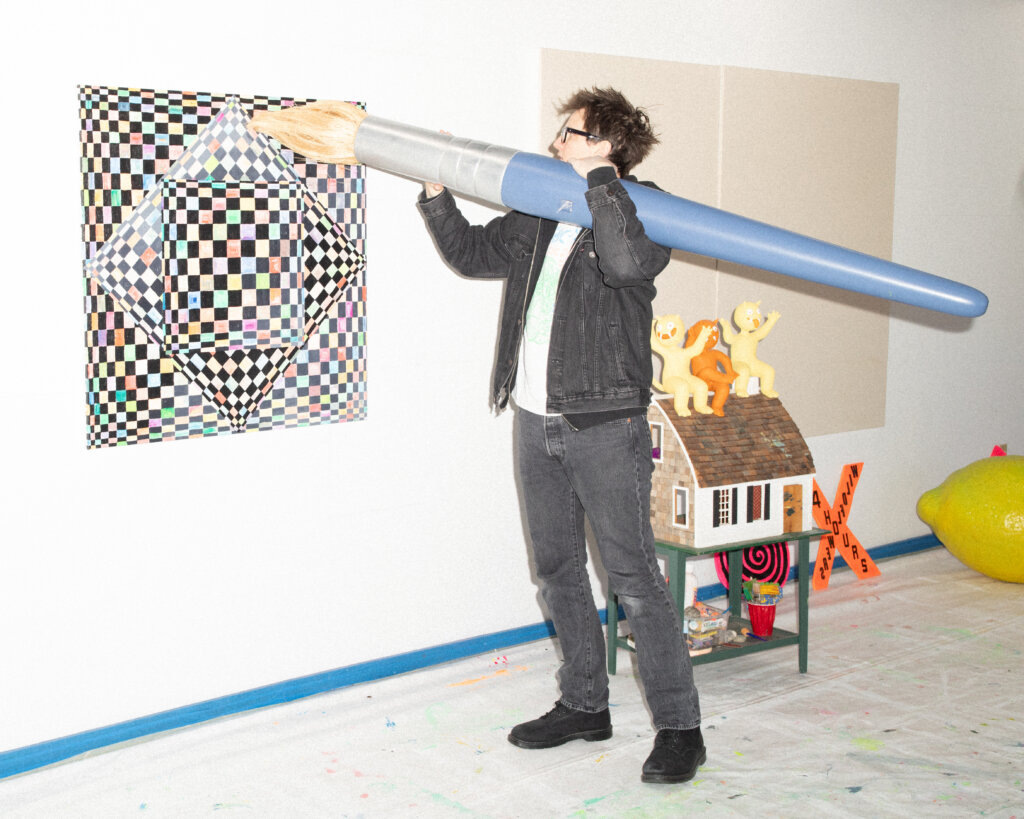
What would you say are some of the influences on your work?
I look at a lot of art history and contemporary art and very literally and figuratively bring that into my work. I do a lot of Picasso imagery in my work as shorthand for the language of art history and a signifier to the layman that I’m looking back. I’m also really interested in the language of communication. I think it comes from my interest in flyer language, which is really the source of what got me into the art world. I understood early on that the language of posting a flier is about communicating to a niche group of people that will recognize a band or the aesthetic of the scene that they’re interested in. Or maybe they’re coming from outside of that and are interested in looking in at something outside of their realm of existence, a subculture that they’re not part of. I like creating something like a mirror. People want to interpret art, people always ask and want to understand things. I like words or a recognizable icon but abstracting that and removing the rules, or linear thinking so to speak. I like when people are not forced to, but instinctually are trying to decipher something without a literal answer.
I’m guessing this is also why you got into packaging design and visual displays?
Definitely, this is a huge part of why I ended up in design. I am interested in communicating abstract ideas in coherent ways to large groups of people. My friend J.S. Wright and I have seltzer water, Miracle Seltzer, that I am excited about. I enjoy making things that spark curiosity and interest. Something that makes people pull out the wallet and put it in or on their body.
Did you consider yourself a part of the New York art scene when you were there?
Totally, yeah. I have a painting career that has fewer rules than my day job, but I come from a blue collar background and I don’t have the luxury of being able to paint all the time. I have to work and luckily I’ve found a career path that allows me to be creative. I explore ideas that I bring into my design stuff, and vice versa – and I think it makes me better at both. I’ll hand paint logos or find a color I like and bring it into a painting or it could be using a print technique or something like that.
Through the necessity to produce commercial work, you’ve found a language where you can express yourself artistically even when you’re not painting personal work.
Yeah, I have a great life. I love it. I do a lot of strategy work for brands and I do a lot of painting for myself. I have the full range of making very personal work and doing very big picture brand exercises, you know? Complete opposite ends of the tangible spectrum. When I’m painting an image for myself, I’m touching it, my hands are dirty in the end and it’s a singular object that I am bringing to life. On the other end of the spectrum, my brain is busy but I am not physical. I’m lucky to have a full range of work that I don’t think a lot of people get in their life.
How does it feel to not be a part of the ‘scene’ in New York in the same way?
I’m in Central Mass so there’s not really anything here. When I moved back here, I had a bit of an existential crisis. Why did I move out in New York? My whole life changed and… I kind of hate change. So I started a gallery to have a good excuse to bring people to me and share my new community and the old with each other.
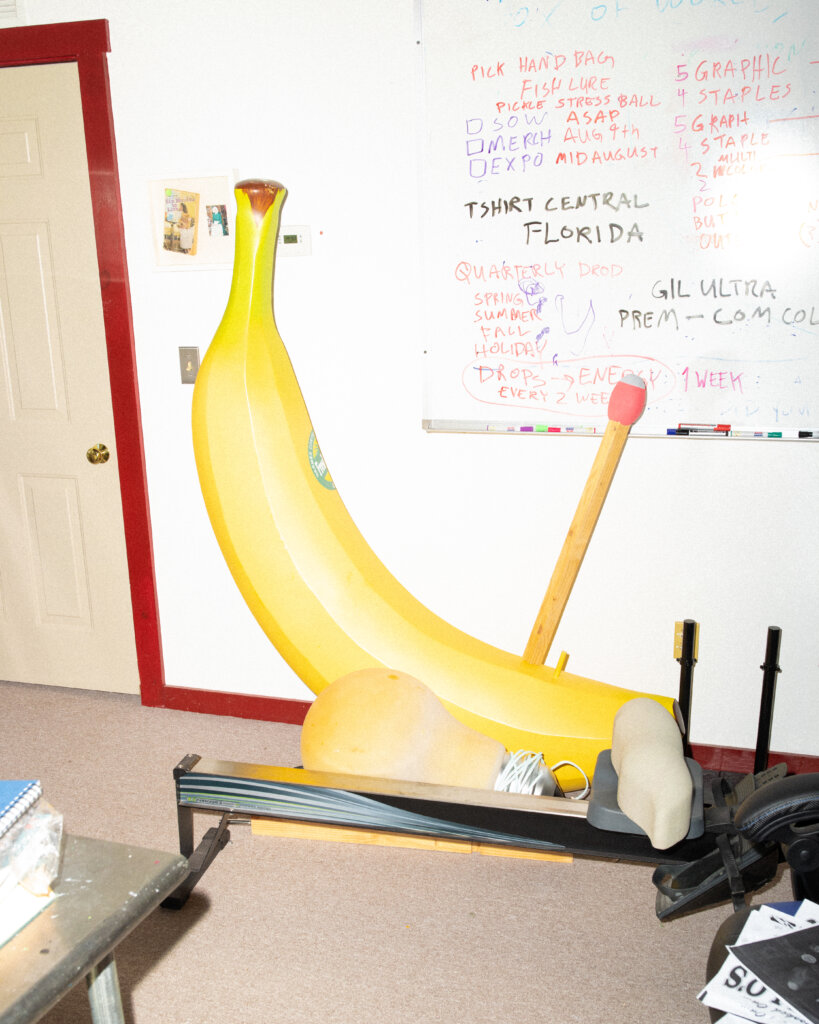
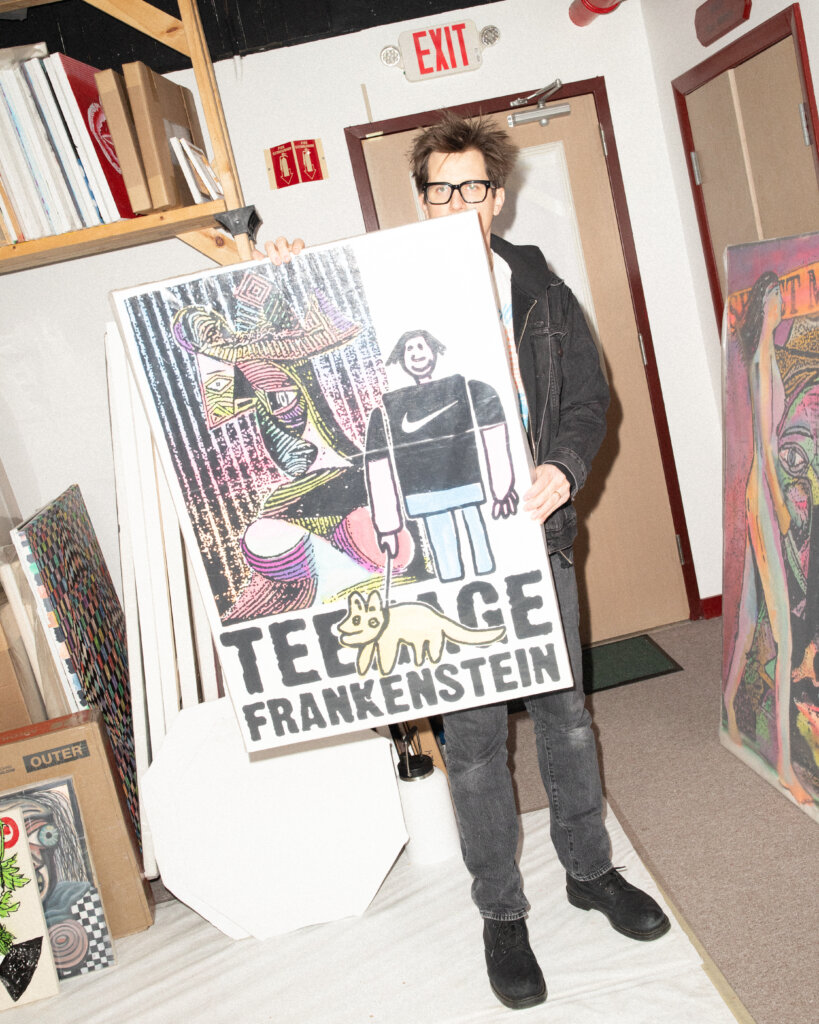
Let’s talk a little bit about the tees that you did with us at submission. What are your thoughts about the collaboration?
It was great, a really clever process! It’s a great example of what I like to make, and what I think a lot of people like to wear; fairly aggressive messages. The aesthetic I often go back to is very DIY and a bit grungier, so that shows in this collaboration. I have a huge archive of photos, old newspaper clippings and stuff like that, which I tapped into and it was a super collaborative effort with the Submission team. Unlike with my paintings – I don’t like people touching them – when I am working on something like this I am not very precious about my work, and it was a great back and forth conversation about ideas.
About the message of the tees – what are your thoughts about sustainability?
I have kids now so I’m thinking a lot further ahead than I did before, but honestly, there’s so much information out there about it that it can be hard to digest. A lot of power in my area comes from a hydroelectric plant, basically steam power generated from burning trash which is… not great. I’m conscious of being sustainable and I try not to ever throw things away… I will say one thing: I think a way to create a massive change in the clothing industry would be getting away from the seasonal model. I understand that we need warmer clothes in the winter etc, but if there was a way to switch to the drop model, that would just be so much better. I’ve seen firsthand what it means to change over seasons in retail, it’s incredibly wasteful on all ends, not just the clothes.
What’s on the horizon in the still relatively new year?
I just released a limited edition book and I’d like to do more projects like that. I’m also in talks about some international shows and yeah, Miracle Seltzer is launching in nationwide stores next month. It started as an art project where we designed 10,000 seltzer cans and now it’s spiraled into this big business. I’m excited, we’ve created it as a platform for other artists to come on to design, and have started an artist grant through it. I just have a lot of things happening honestly, it’s hard to grasp.
| Cookie | Duration | Description |
|---|---|---|
| cookielawinfo-checkbox-analytics | 11 months | This cookie is set by GDPR Cookie Consent plugin. The cookie is used to store the user consent for the cookies in the category "Analytics". |
| cookielawinfo-checkbox-functional | 11 months | The cookie is set by GDPR cookie consent to record the user consent for the cookies in the category "Functional". |
| cookielawinfo-checkbox-necessary | 11 months | This cookie is set by GDPR Cookie Consent plugin. The cookies is used to store the user consent for the cookies in the category "Necessary". |
| cookielawinfo-checkbox-others | 11 months | This cookie is set by GDPR Cookie Consent plugin. The cookie is used to store the user consent for the cookies in the category "Other. |
| cookielawinfo-checkbox-performance | 11 months | This cookie is set by GDPR Cookie Consent plugin. The cookie is used to store the user consent for the cookies in the category "Performance". |
| viewed_cookie_policy | 11 months | The cookie is set by the GDPR Cookie Consent plugin and is used to store whether or not user has consented to the use of cookies. It does not store any personal data. |